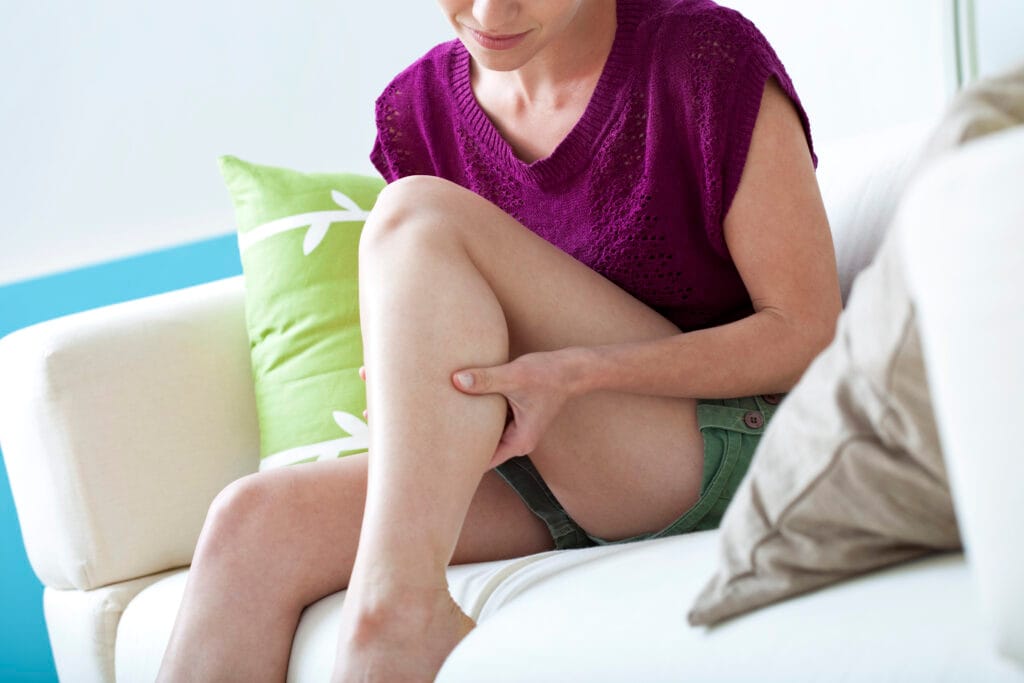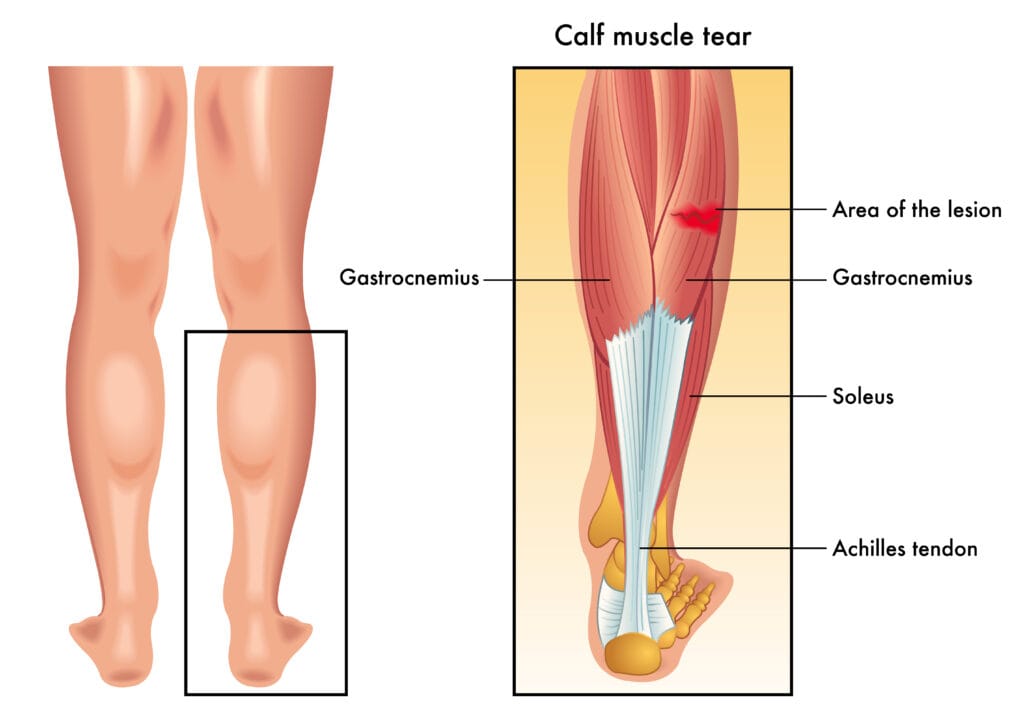Calf Muscle Pain: Causes & Treatment
Situated on the back of your lower leg between the knee and the ankle, your calf muscle is central to walking, running, jumping, standing on tiptoes, and flexing your foot. When calf muscle pain occurs, it can severely compromise your mobility and impact everything from high-level athletic performance to the ability to complete daily tasks and activities.
Calf muscle pain may range from mild to severe but is usually highly treatable with proper care and rehabilitation. At Fit4Life Physiotherapy, our experienced team tailors a treatment plan to the needs of each patient and uses a wide range of techniques for pain management and to restore complete calf muscle function.

If you are experiencing pain, tenderness, stiffness, swelling, muscle spasms, and/or limited mobility in your calf muscle, the team at Fit4Life can help. Contact our office directly to schedule an appointment.
Anatomy Of The Calf Muscles
Your calf muscle consists of two main muscles. Your gastrocnemius and soleus. Because these two muscles come together above your heel forming your Achilles tendon, some providers refer to the gastrocnemius and soleus as one large muscle with two sections. Calf pain can result from injury or damage to one or more of the calf muscles.

Common Causes Of Calf Muscle Pain
Numerous injuries and conditions can cause pain in the calf muscles. Some of the most common include:
Strains and Sprains – The calf muscles may become overstretched, or in severe cases, torn as the result of sudden, intense movements such as jumping or changing direction. Calf muscle strains and sprains can also be caused by overuse or engaging in intense physical activity without a proper warm-up.
Muscle Spasms – Calf muscle spasms are often due to overuse or dehydration, but can also occur in people who have recently increased their physical activity or are training at an elite level.
Tendonitis – Calf pain from tendonitis is usually characterized by inflammation of the Achilles tendon, the thick tendon that connects the calf muscles to the heel bone.
Plantar fasciitis – This is a condition that comes about when the fascia under the foot stretches from excessive pronation ( flat feet and /or foot collapsing inward). The tibialis posterior calf muscle tries really hard to prevent this movement and this gets overworked and can result in pain in the anteromedial part of the calf. This pronation also causes torsion of the achilles tendon which could result in tendonitis explained above.
Referred Nerve Pain – In some cases, pain in the calf can actually originate from a pinched or compressed nerve in the leg or lower back.
Contusions – A direct trauma to the calf muscle may result in bruising and soreness that can impact comfort and mobility.
If calf muscle pain comes on suddenly without a clear cause, a medical condition such as reduced blood flow (claudication) or a blood clot (deep vein thrombosis) may be suspected. If you have concerns about the underlying cause of your calf pain, it is recommended to seek medical attention as soon as possible.
Get Calf Muscle Pain Relief With Fit4Life
At Fit4Life Physiotherapy, our experienced team will carefully assess and evaluate your calf pain to ensure an accurate diagnosis. Next, we’ll develop a customized treatment plan that may include one or more of the following therapies and techniques:
- A personalized exercise program.
- Manual therapy (soft tissue release, passive stretching,joint mobilization, muscle energy techniques and so on).
- Electrical modalities such as ultrasound, laser therapy, or interferential current (IFC)
- Acupuncture and/or Dry Needling
- Bracing, splinting, or taping
Book an appointment at Fit4Life today to resolve calf pain and regain comfort, mobility, and function as soon as possible!



